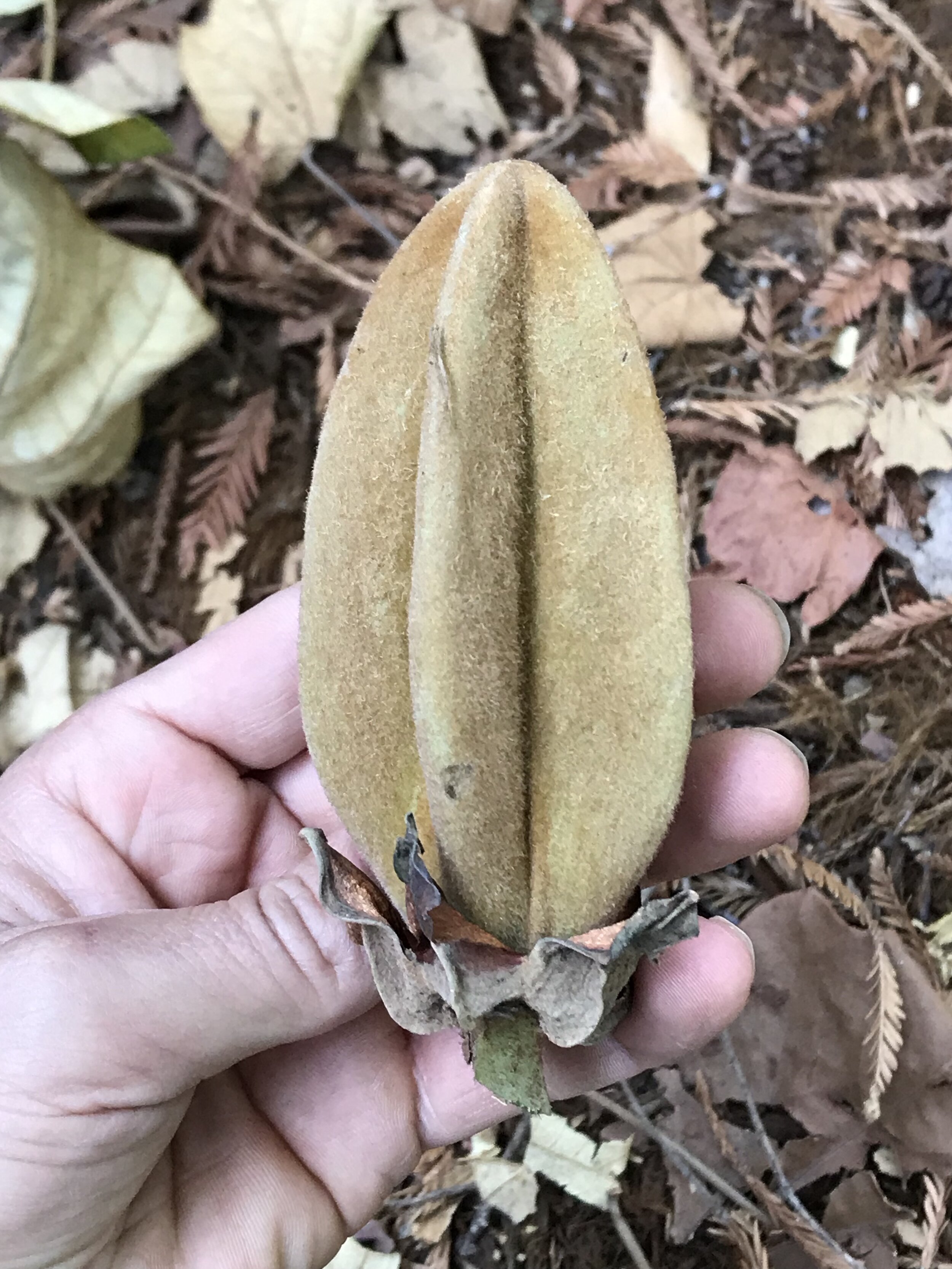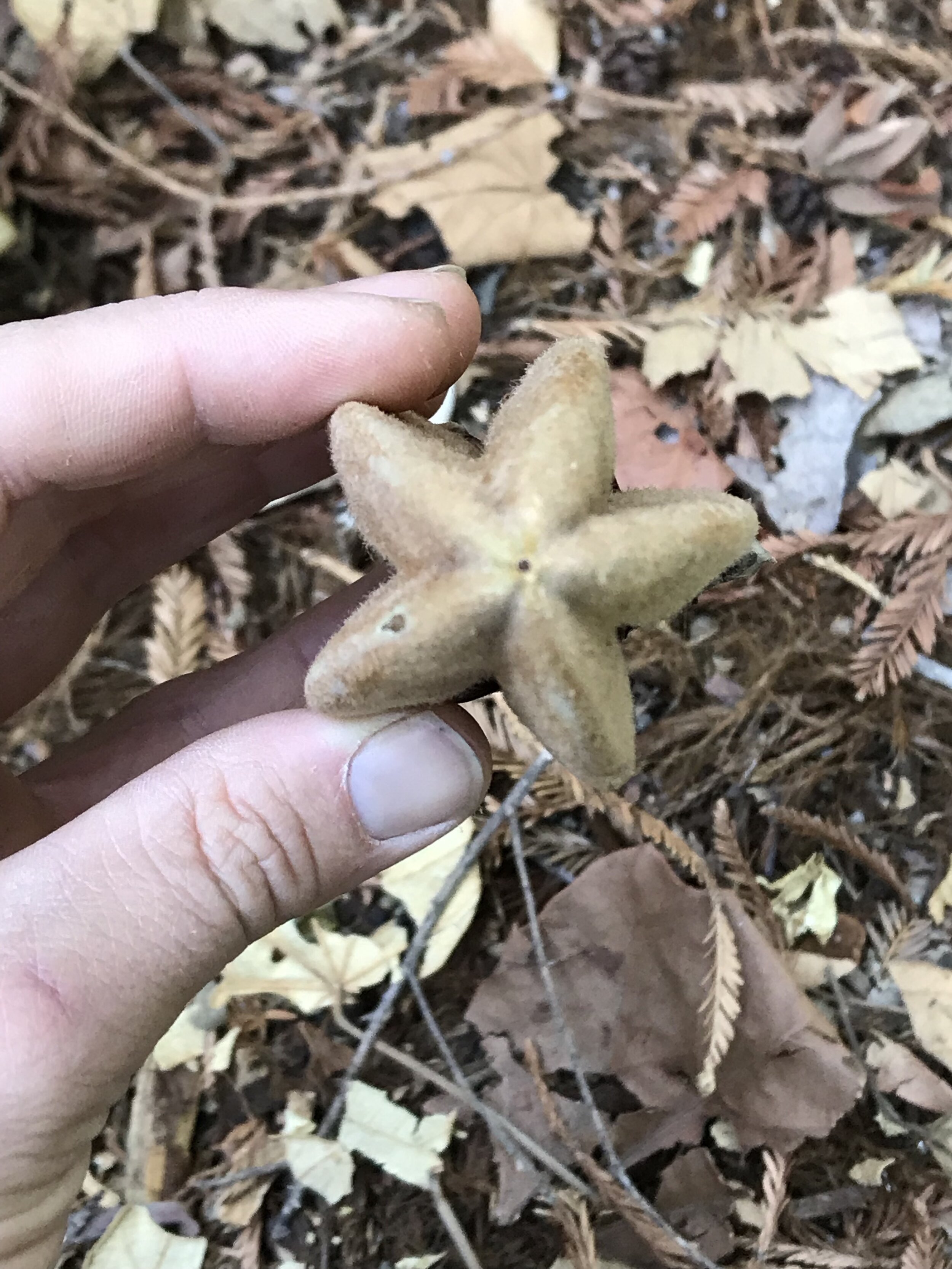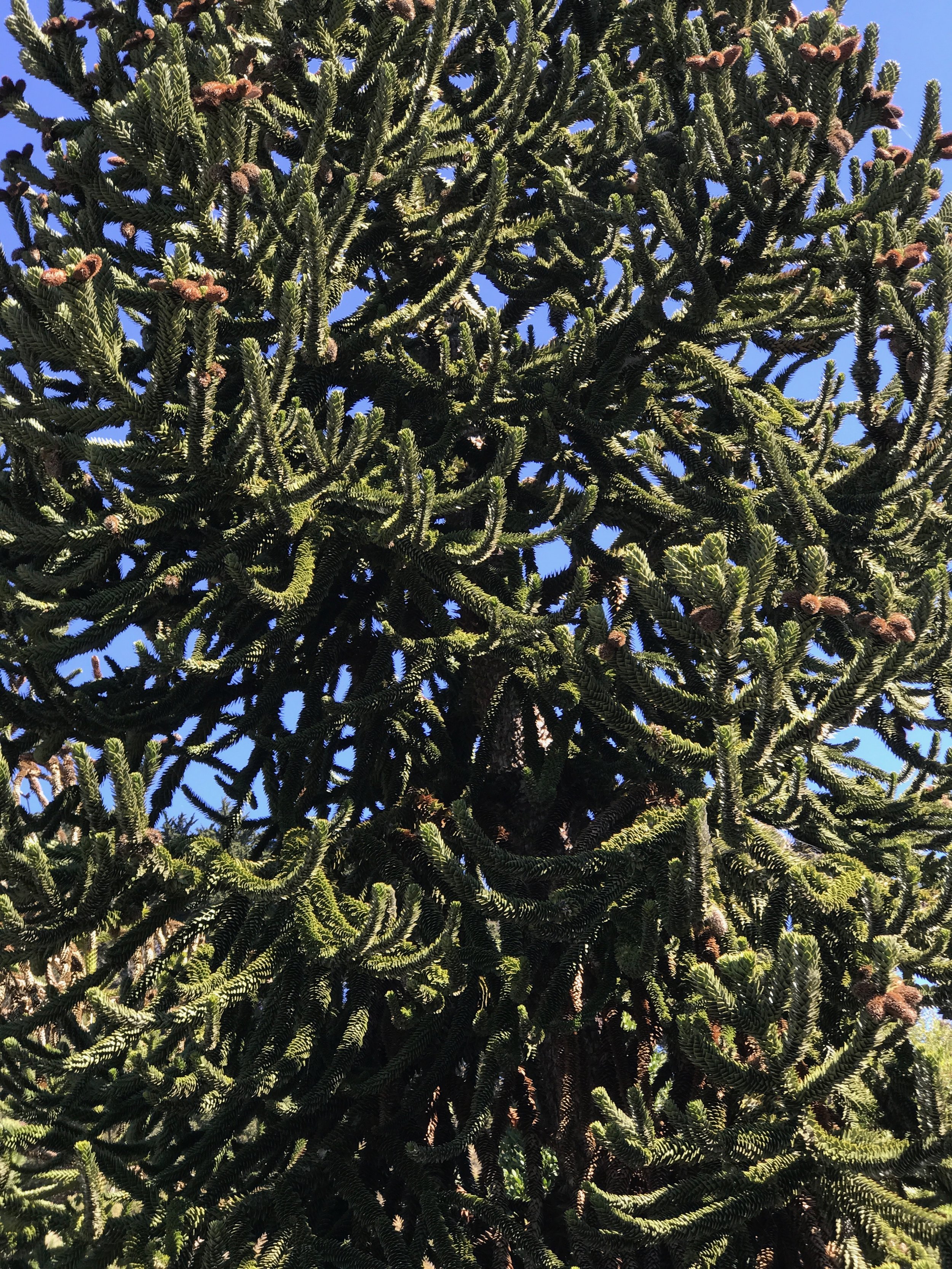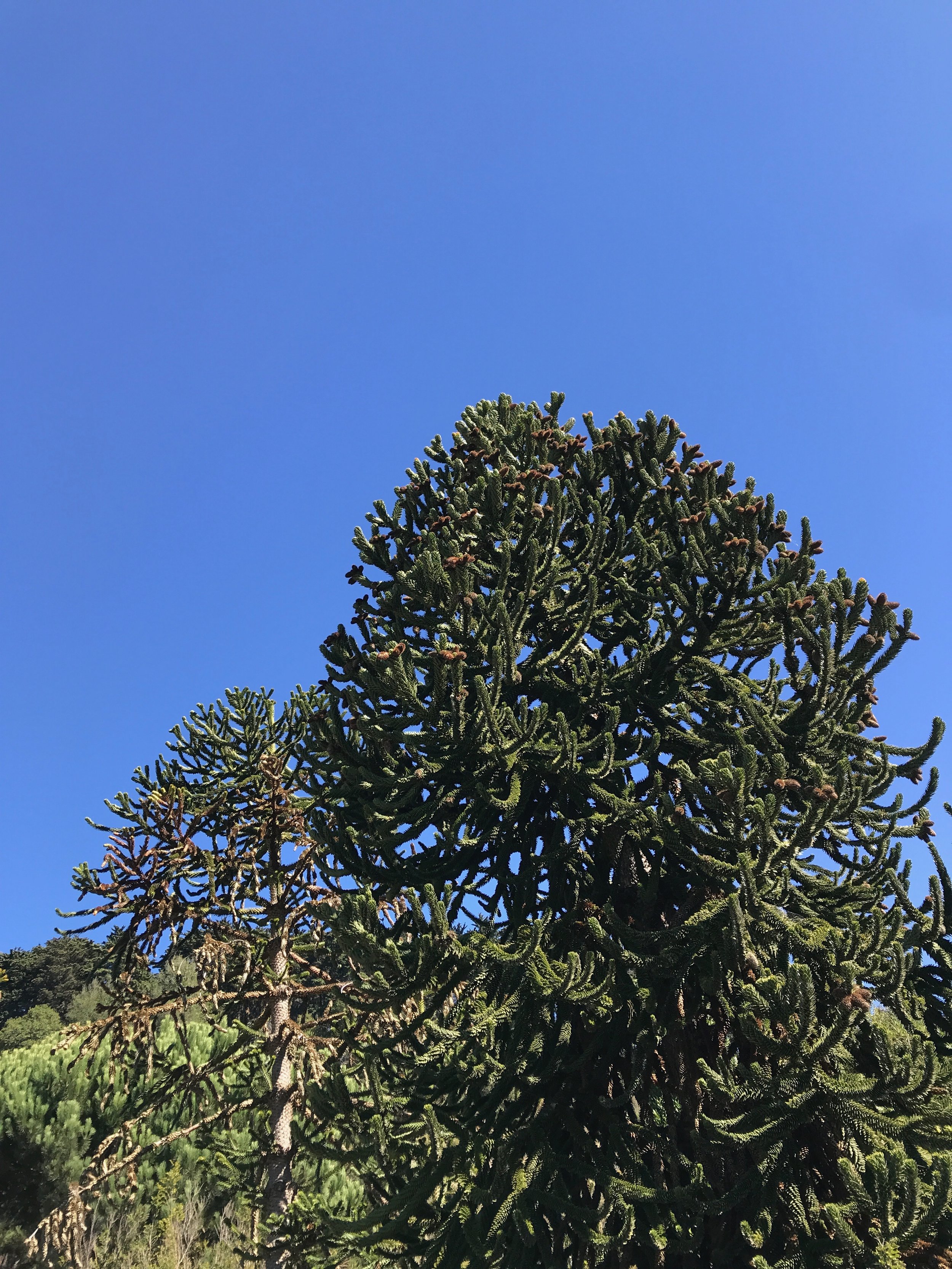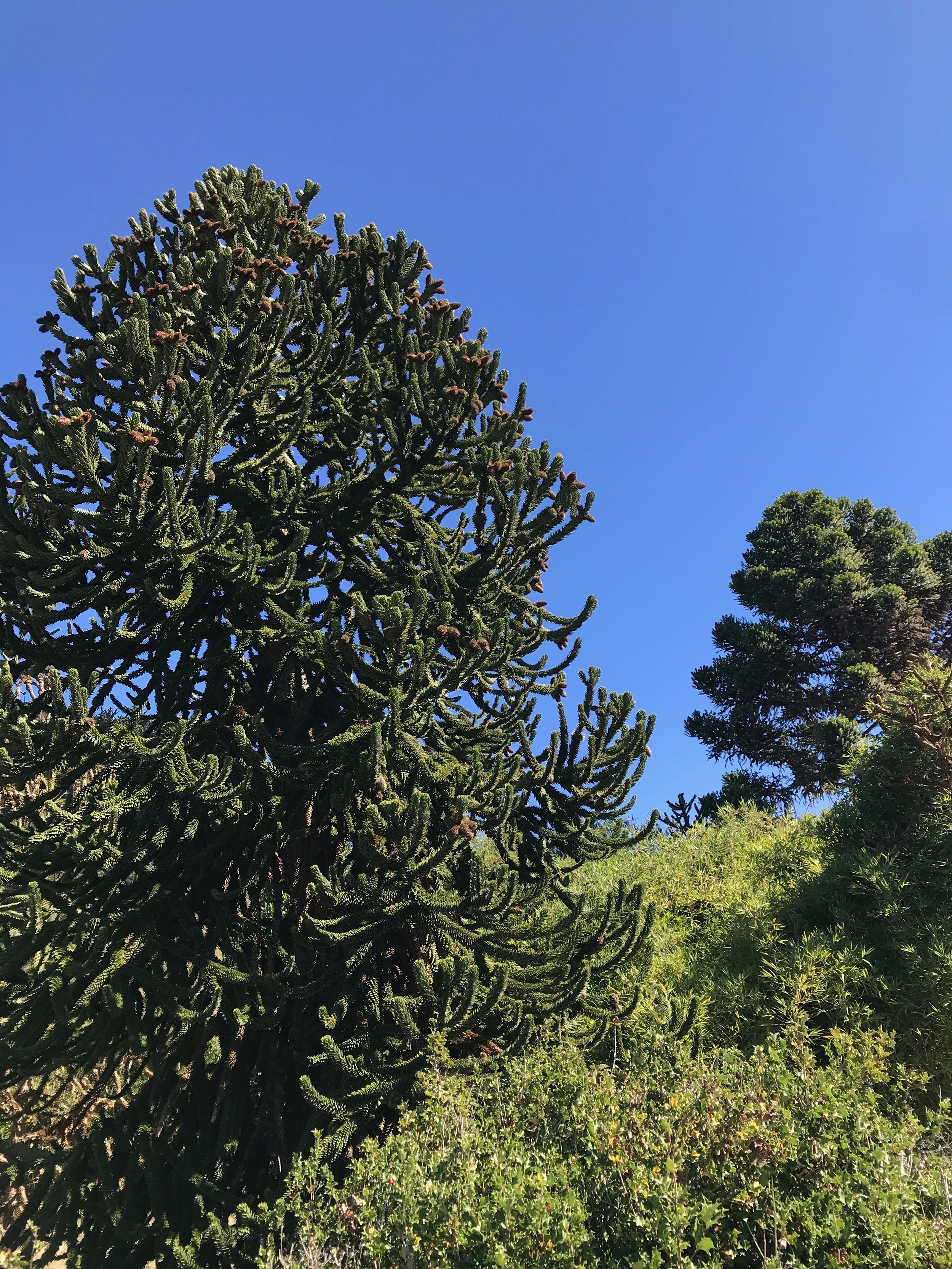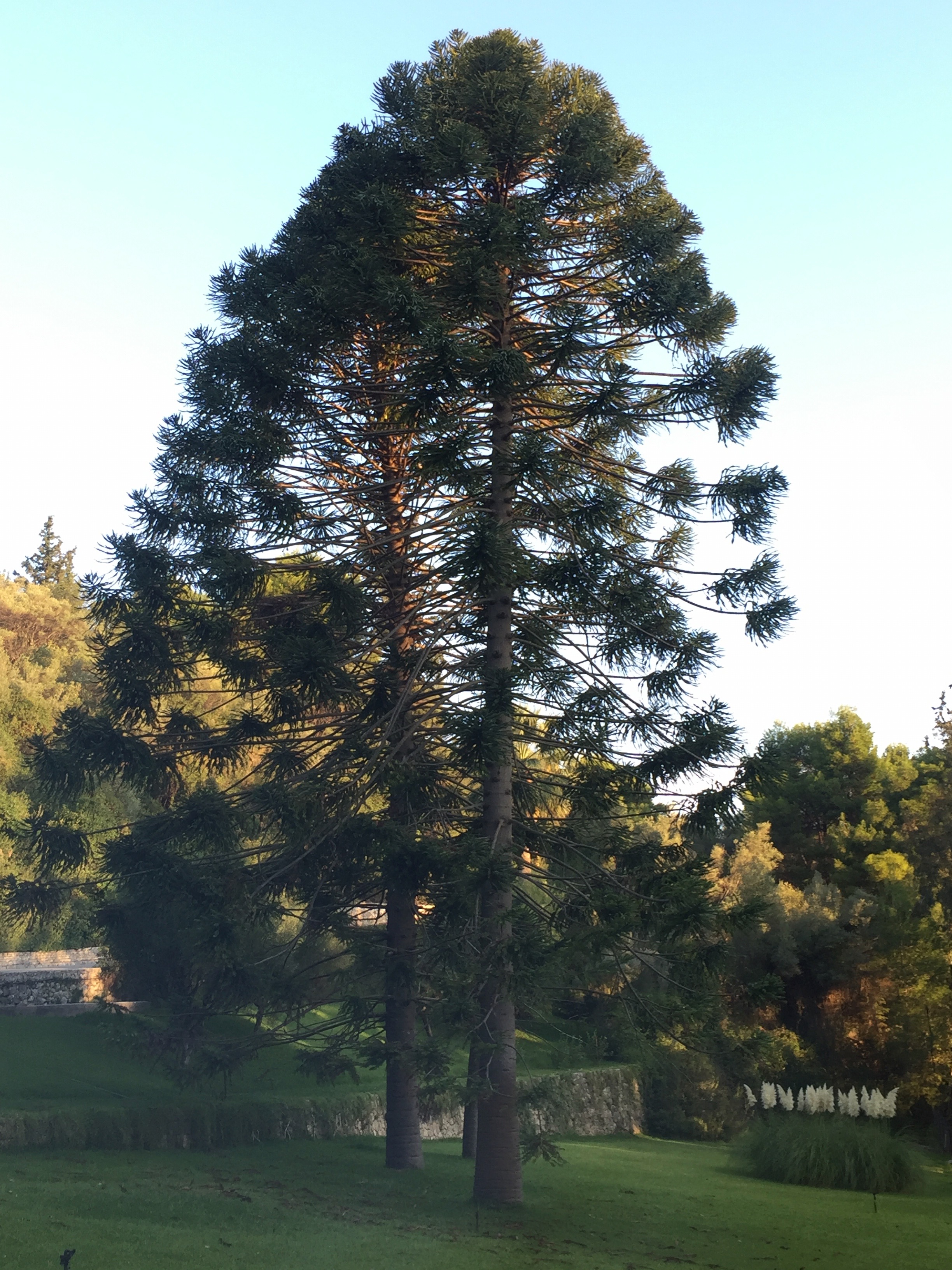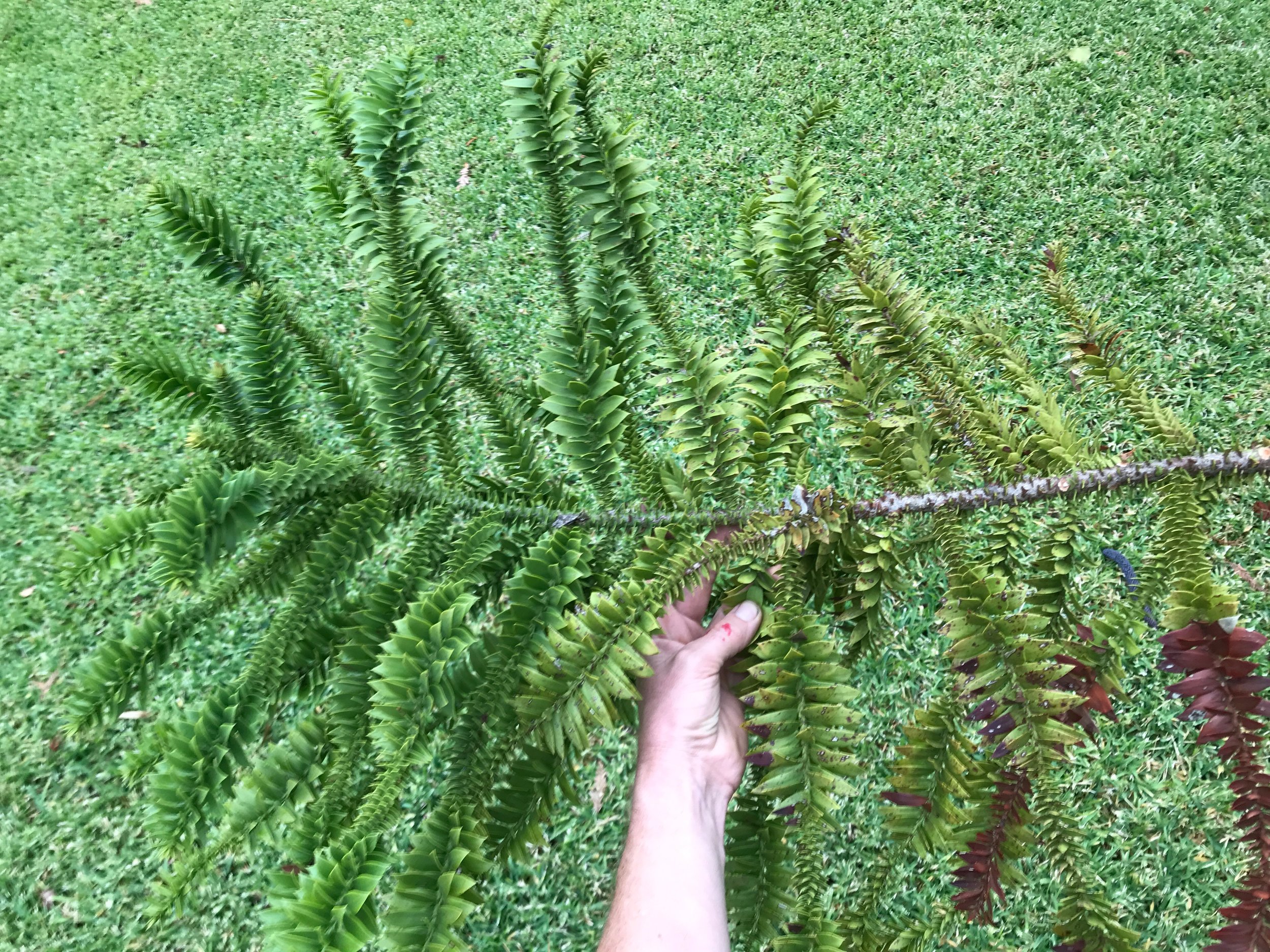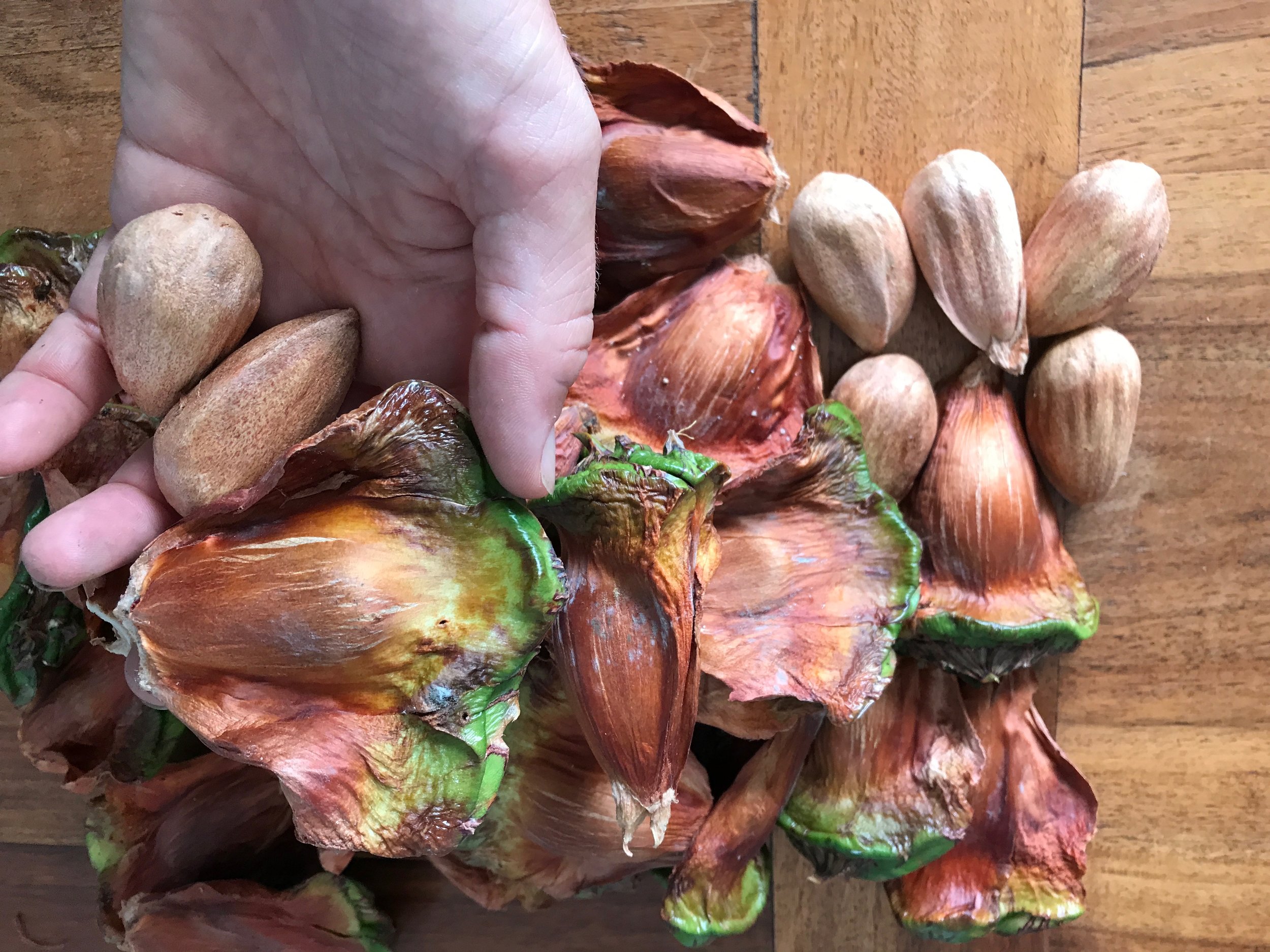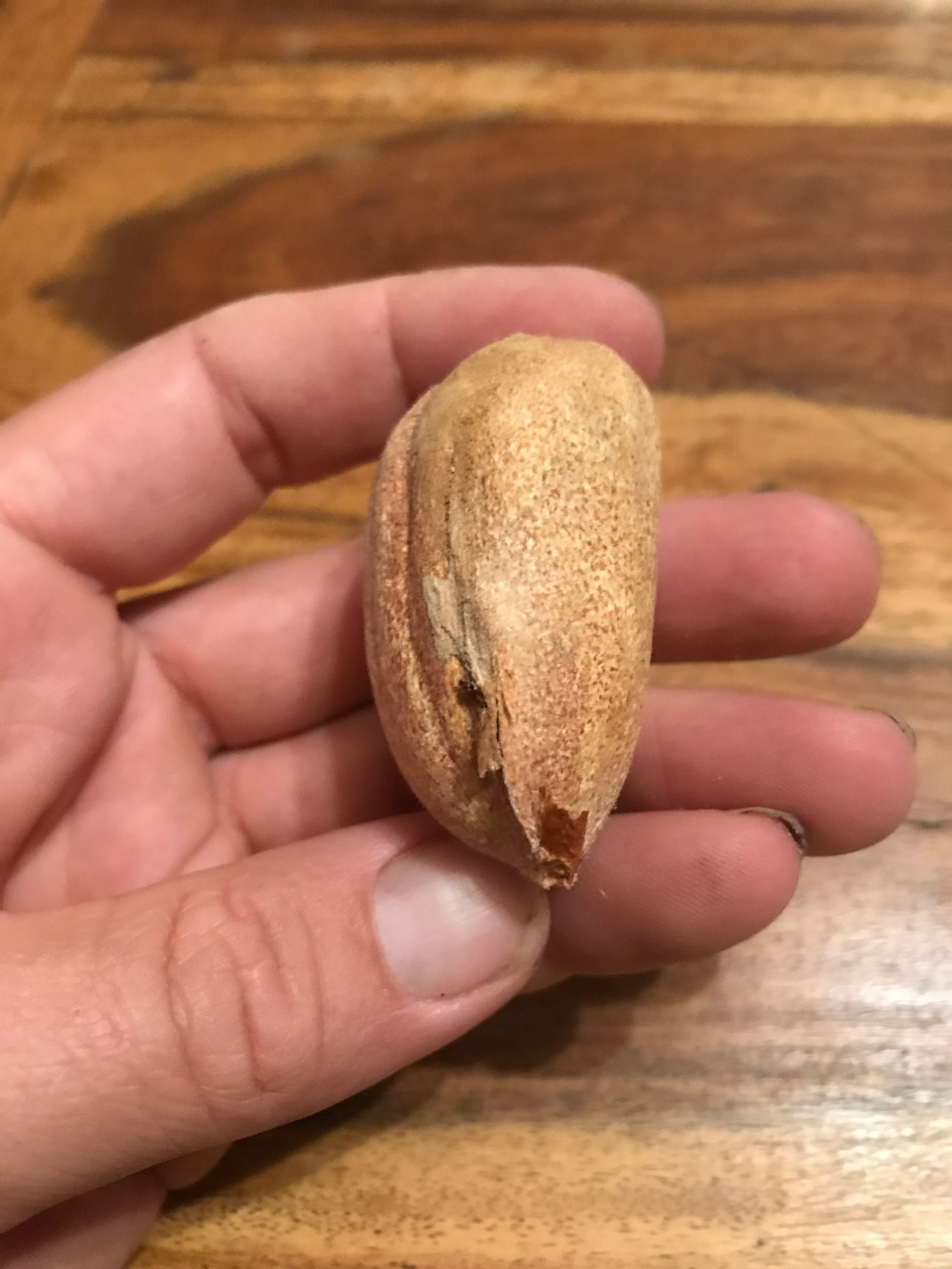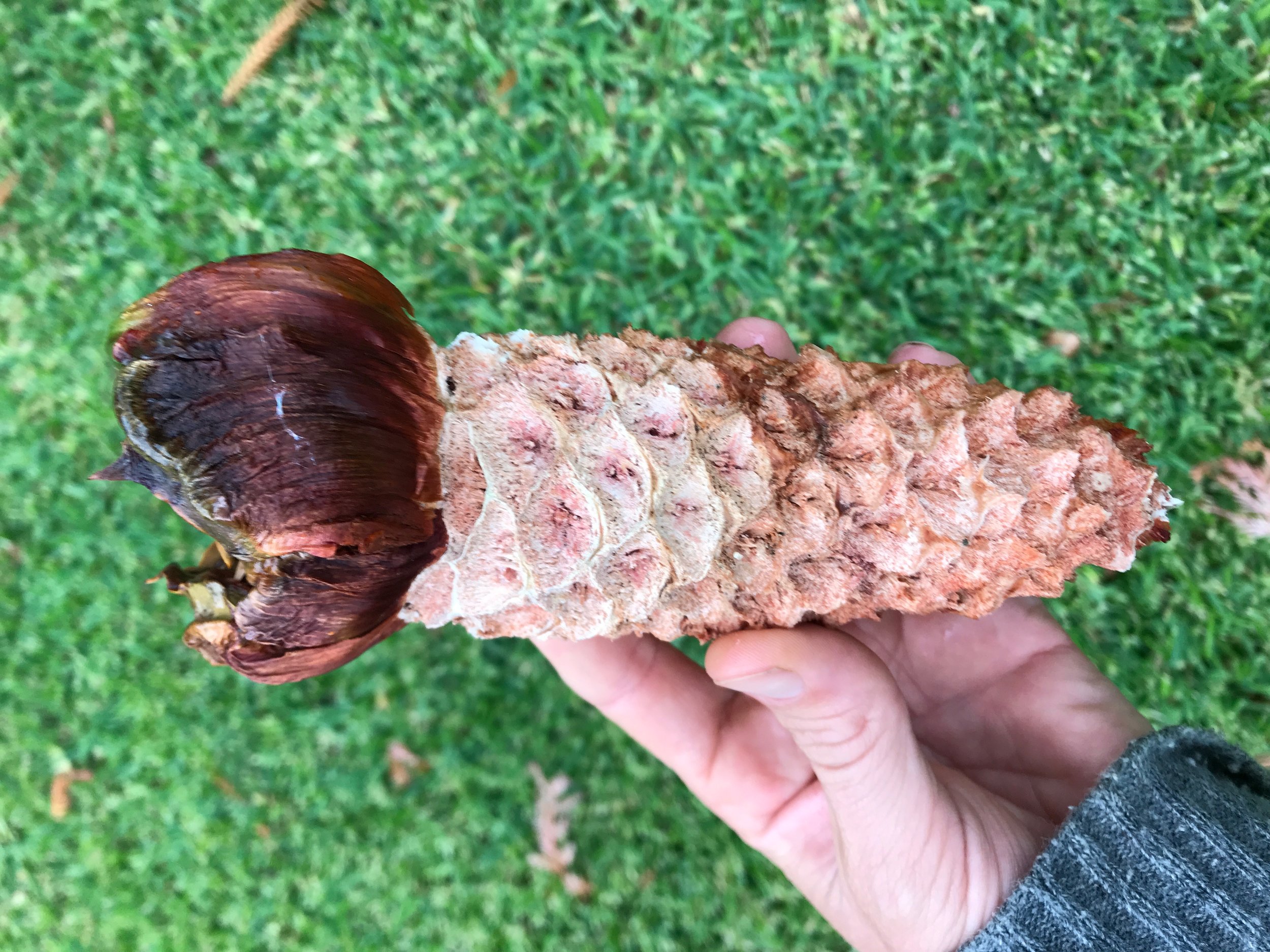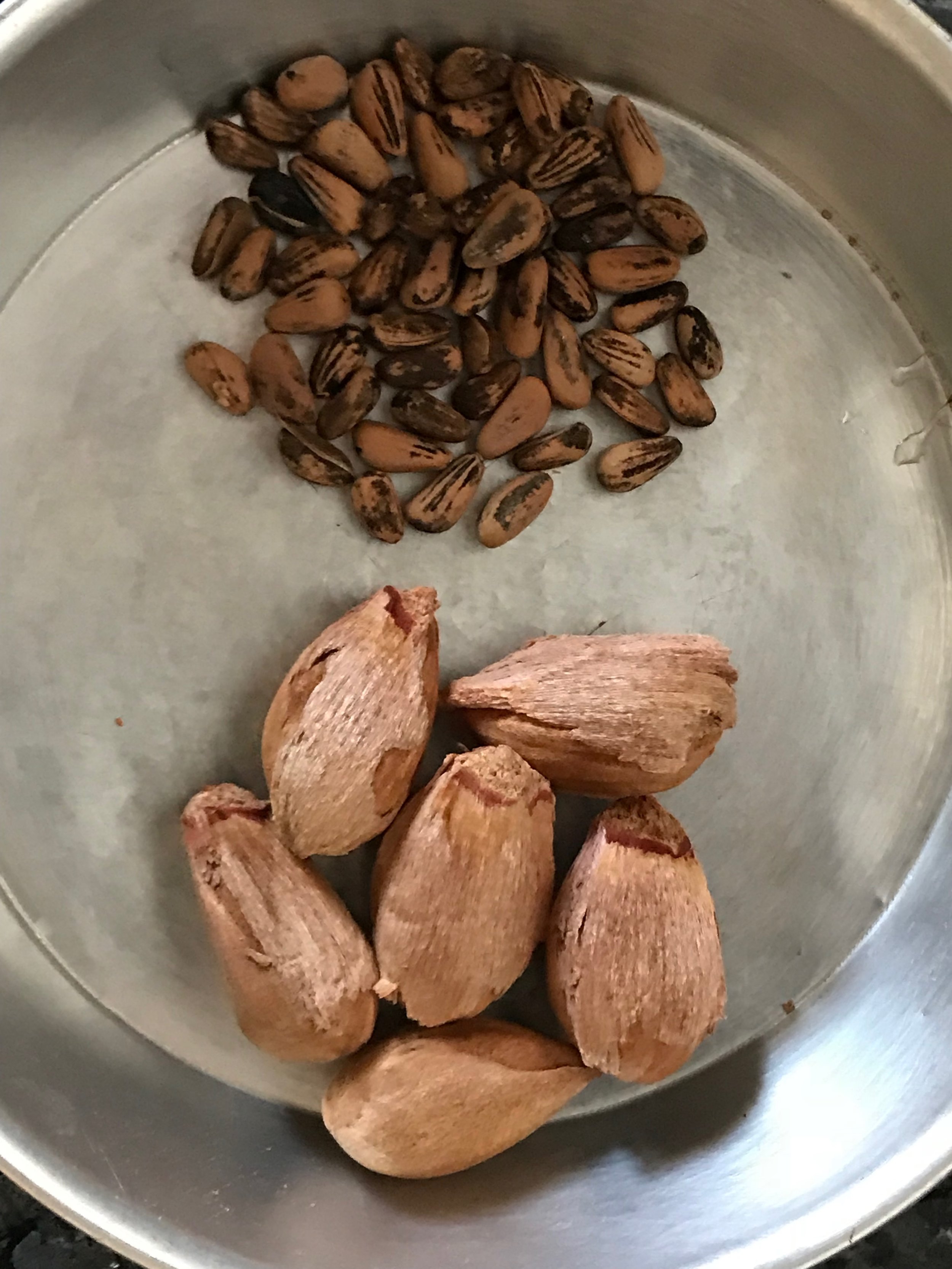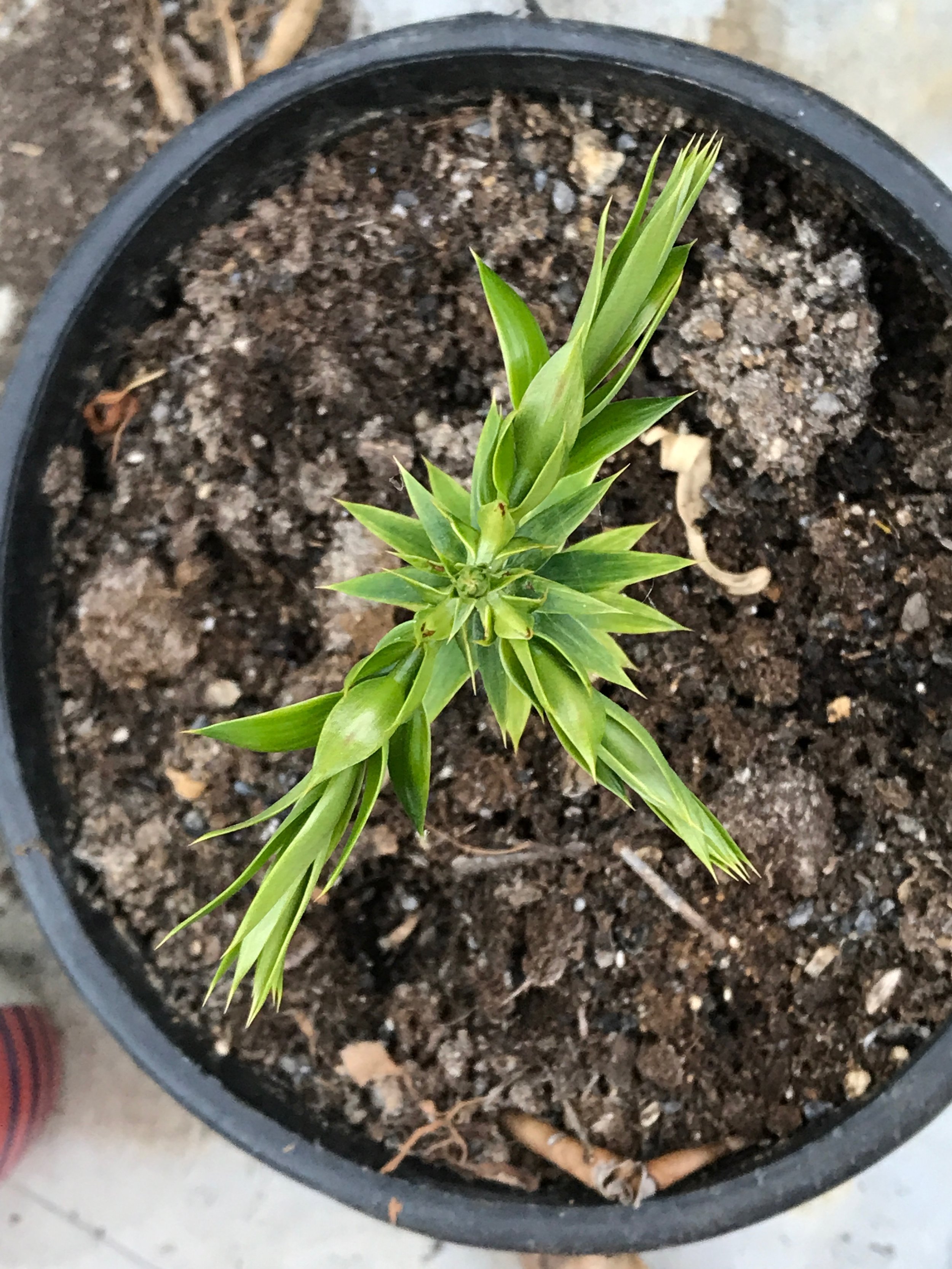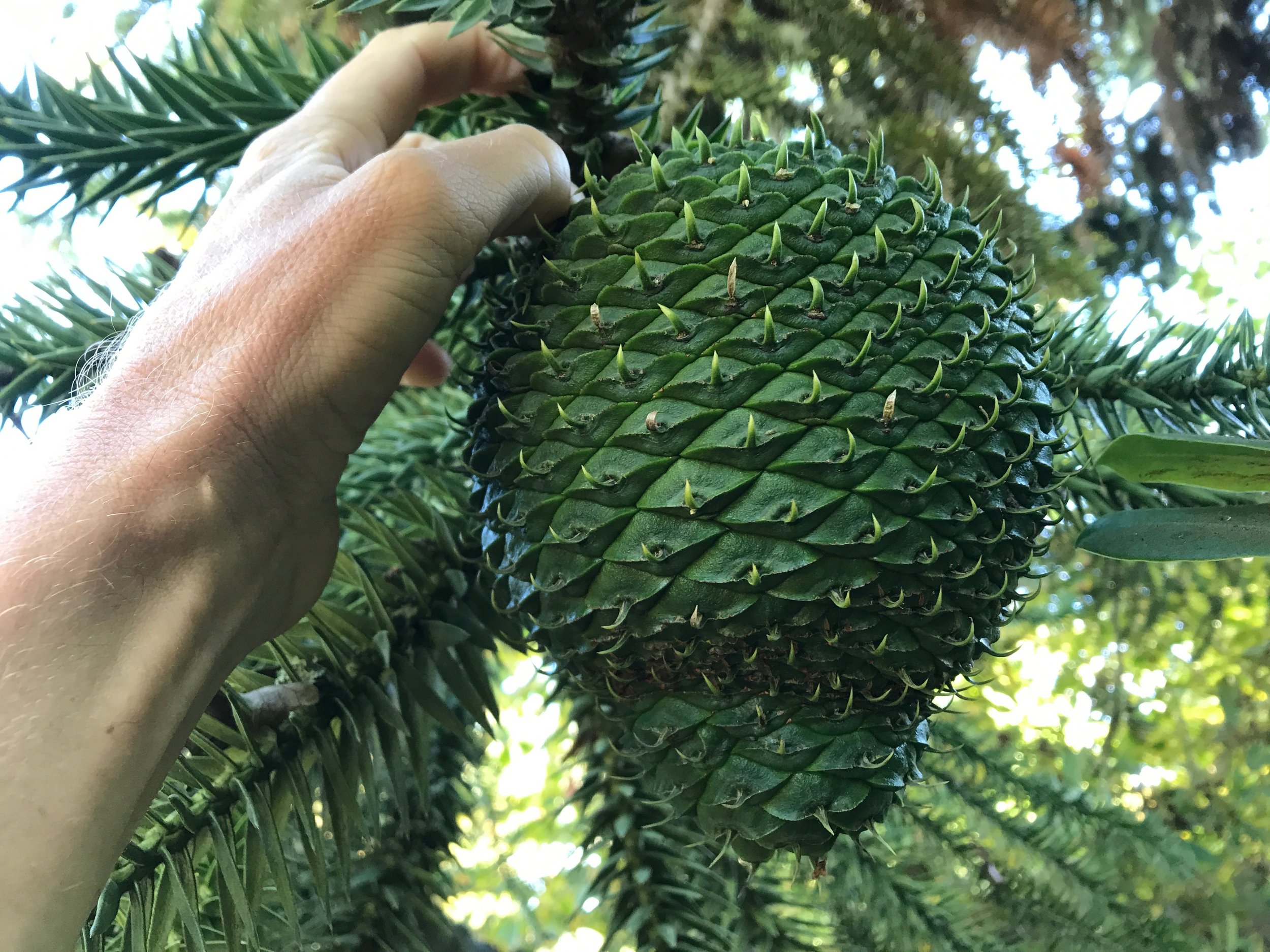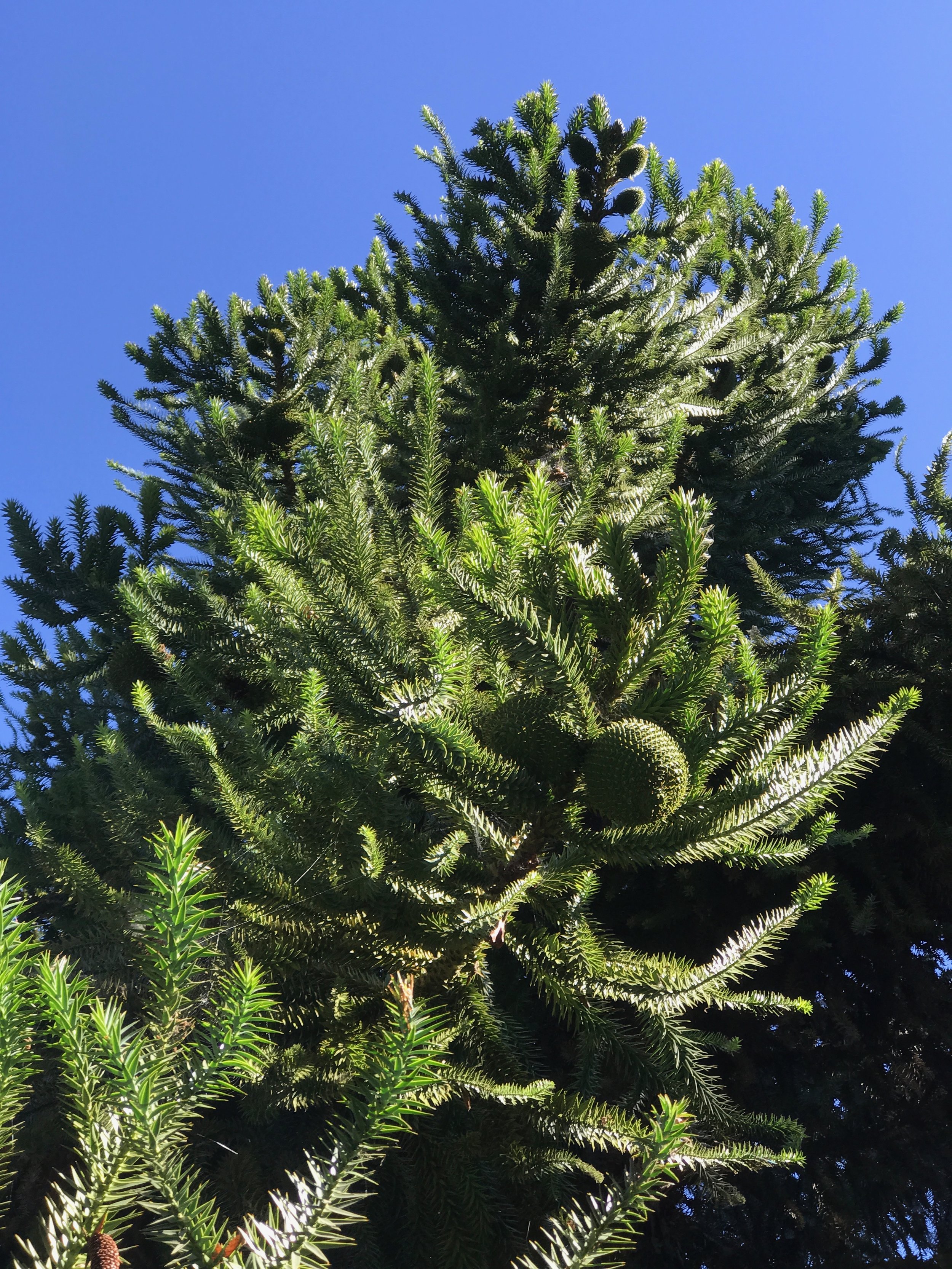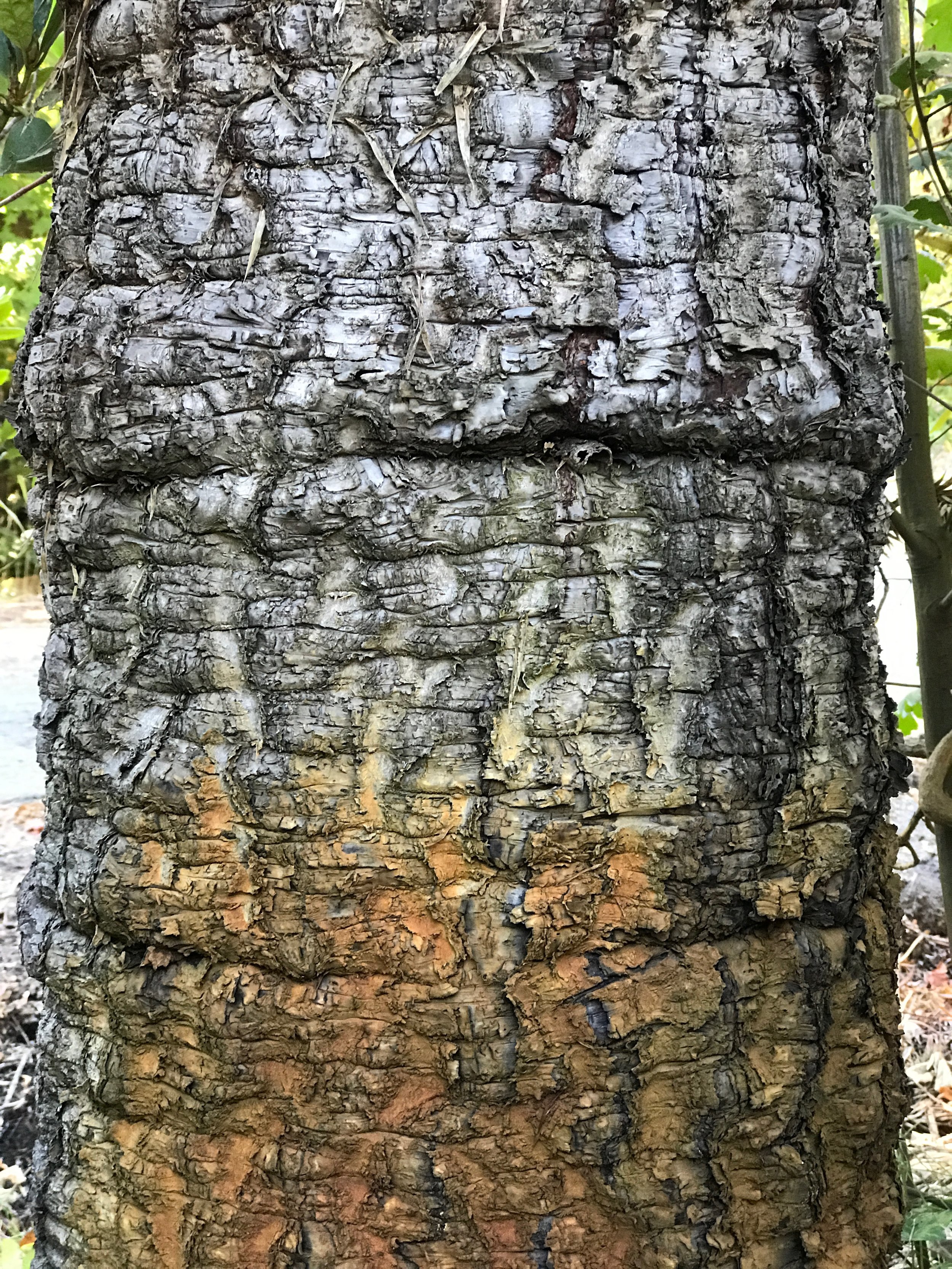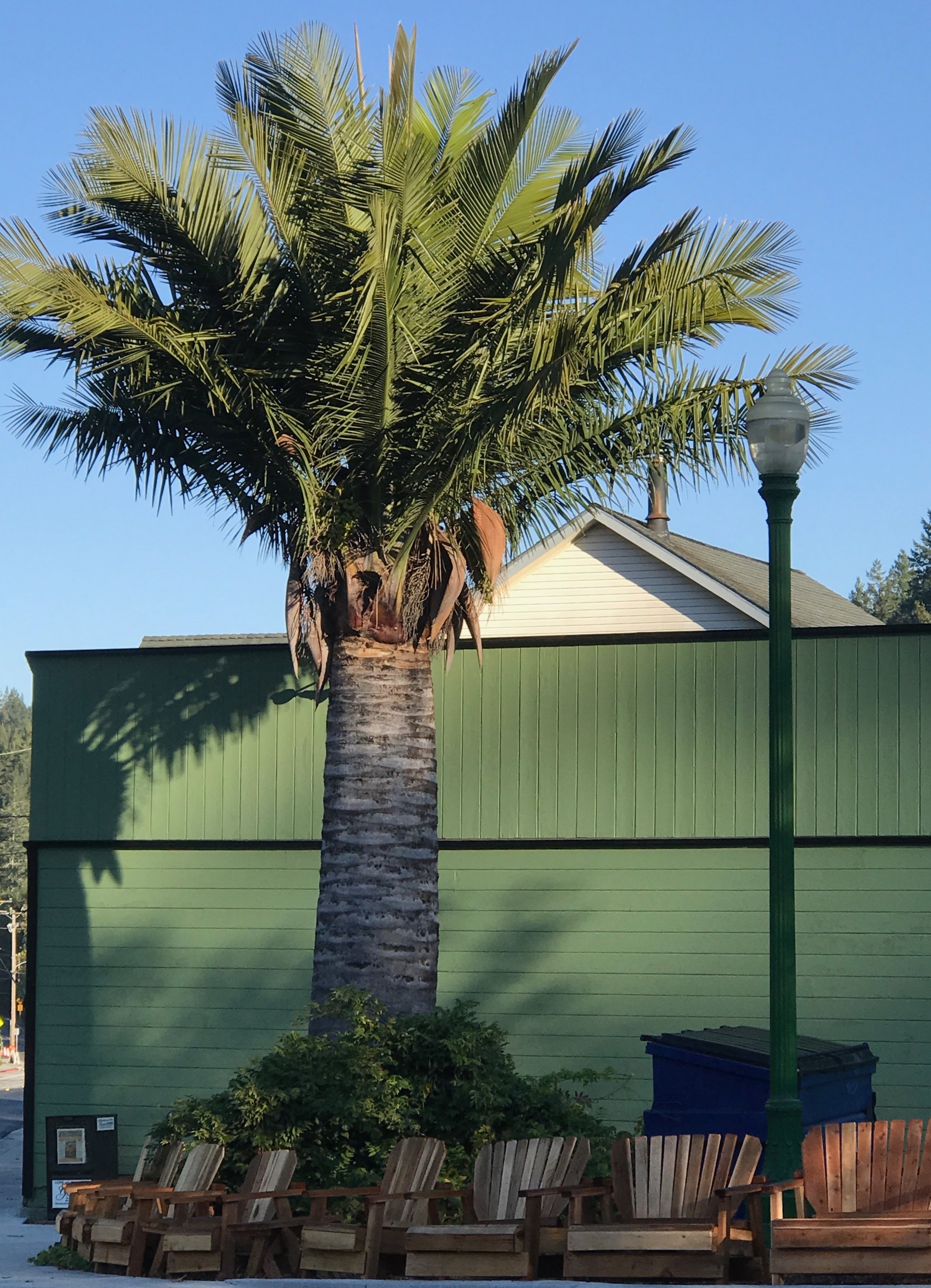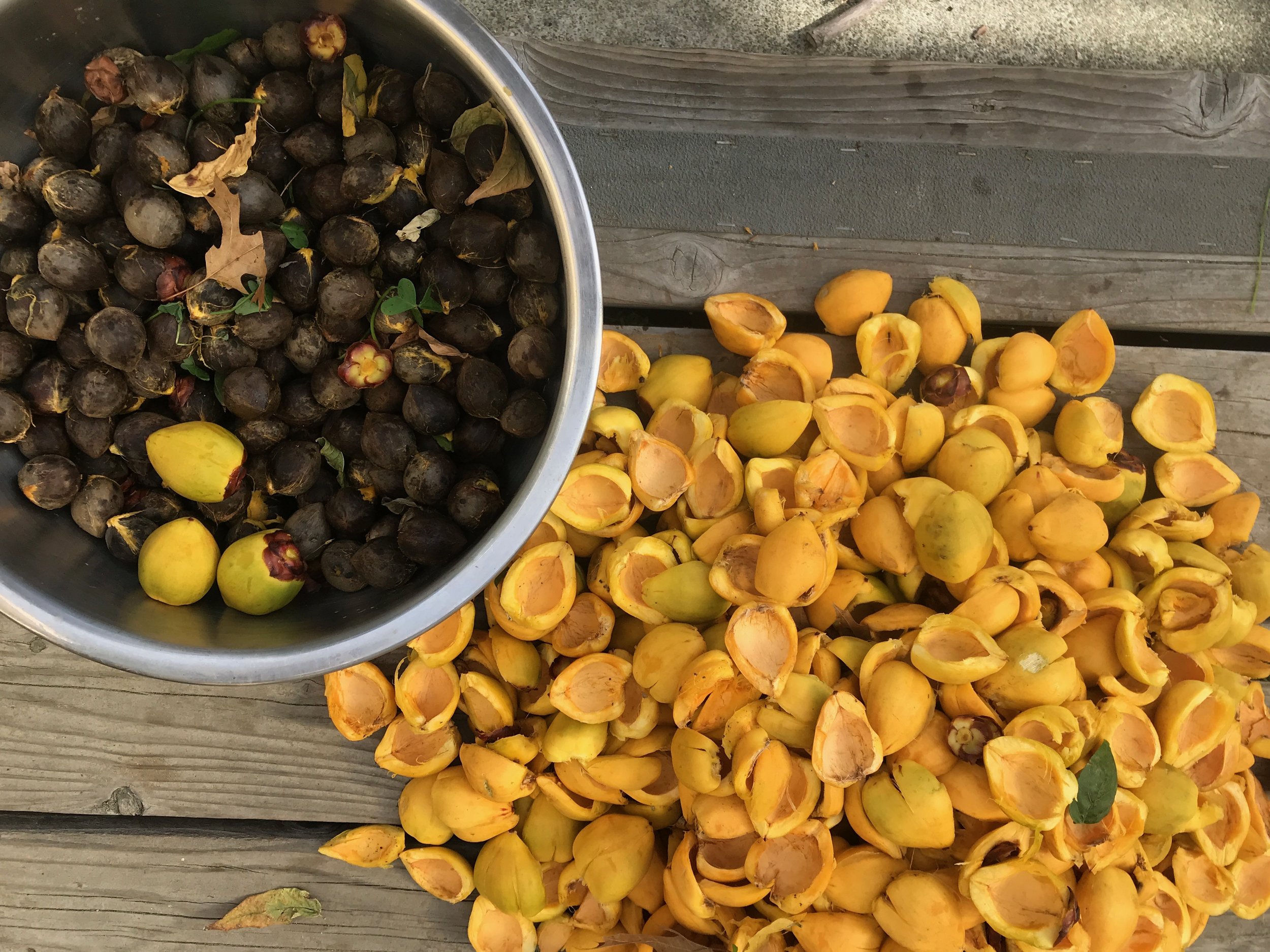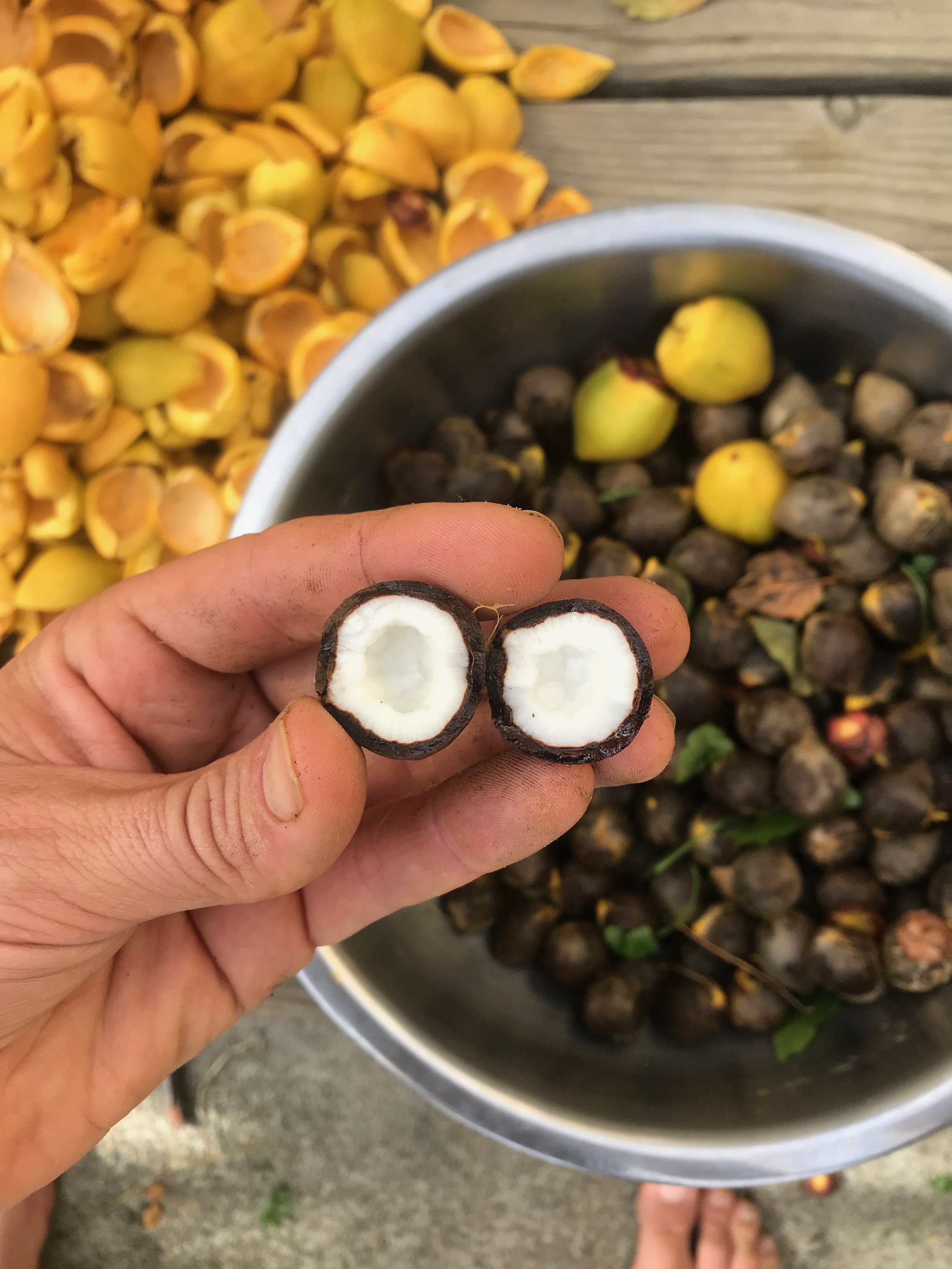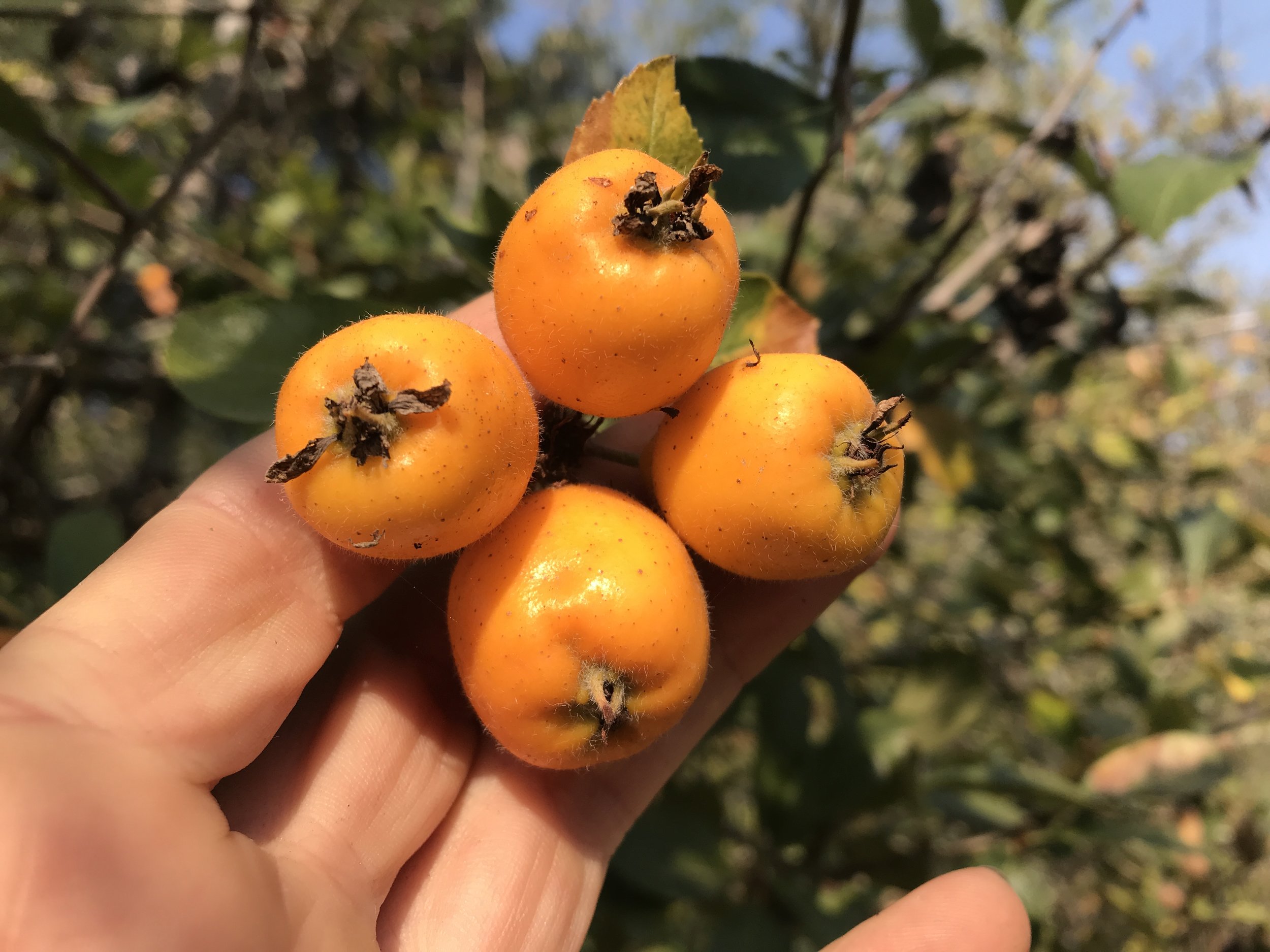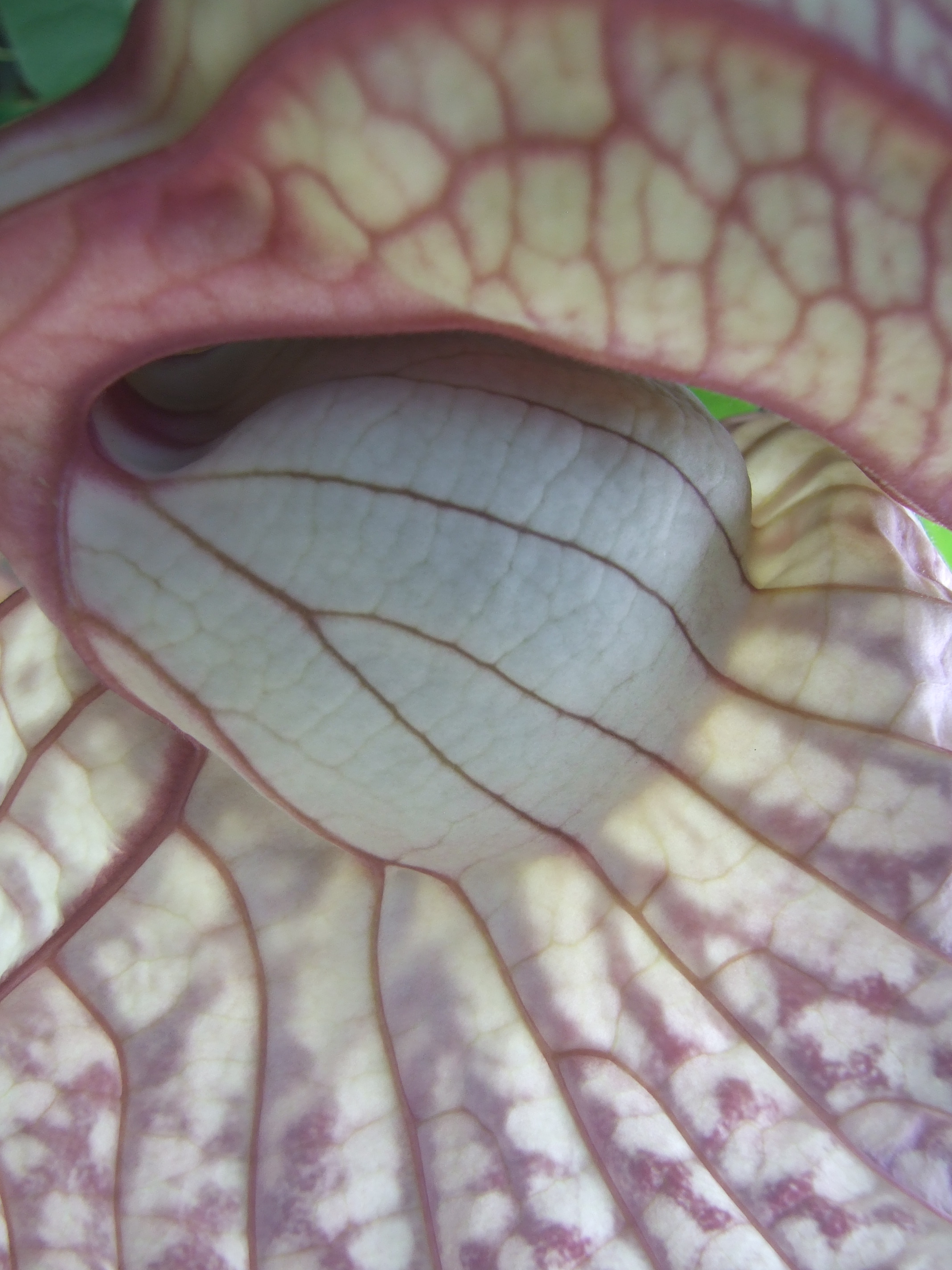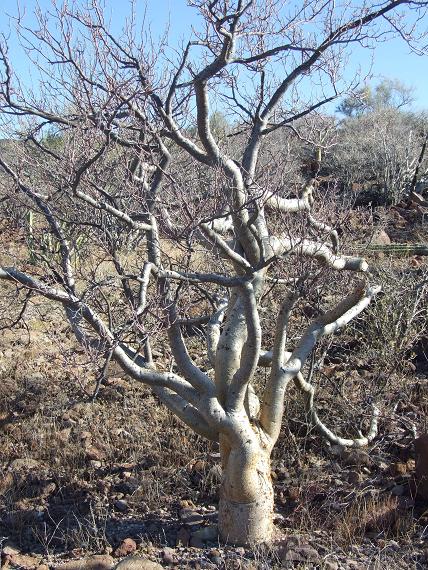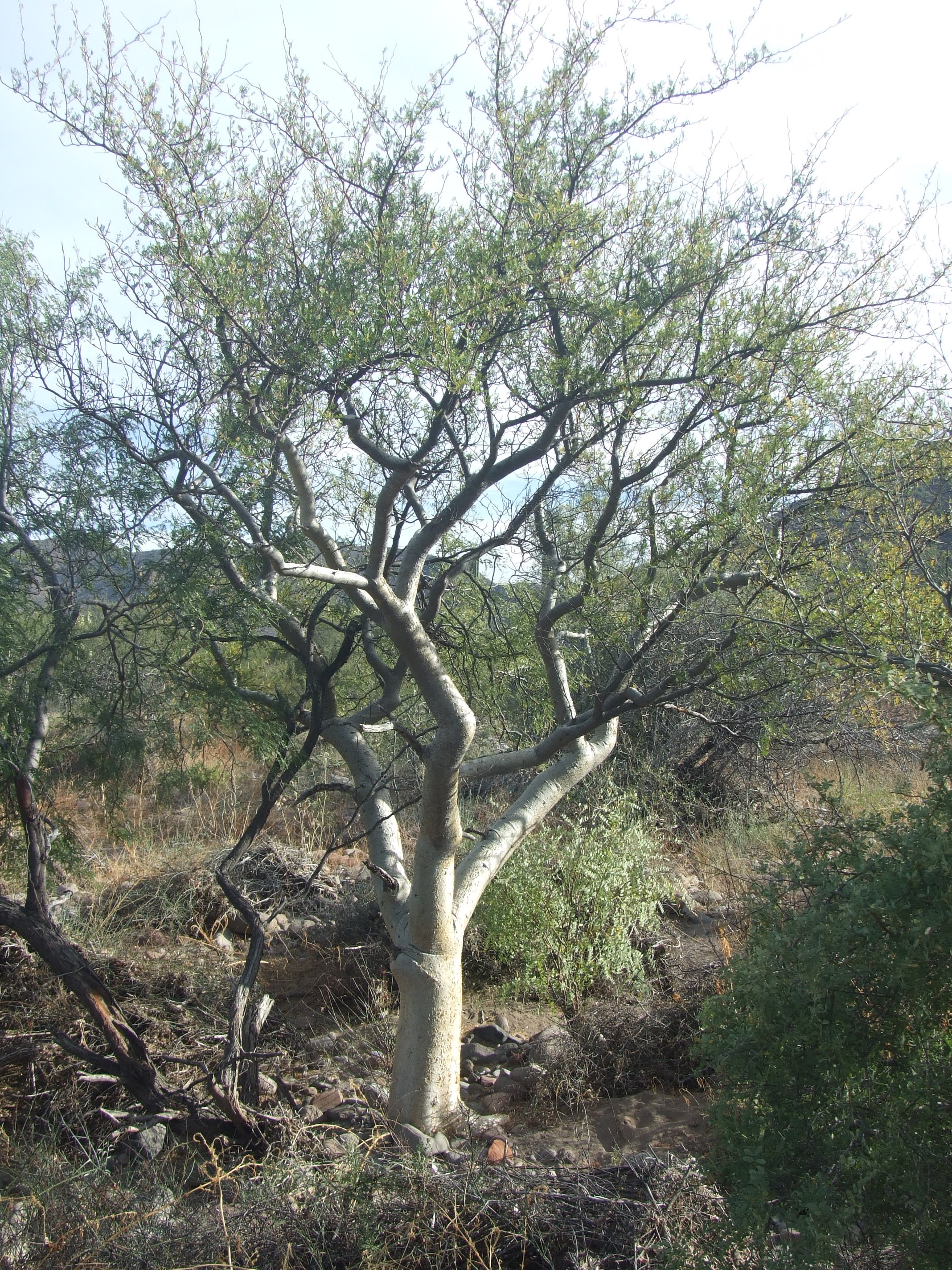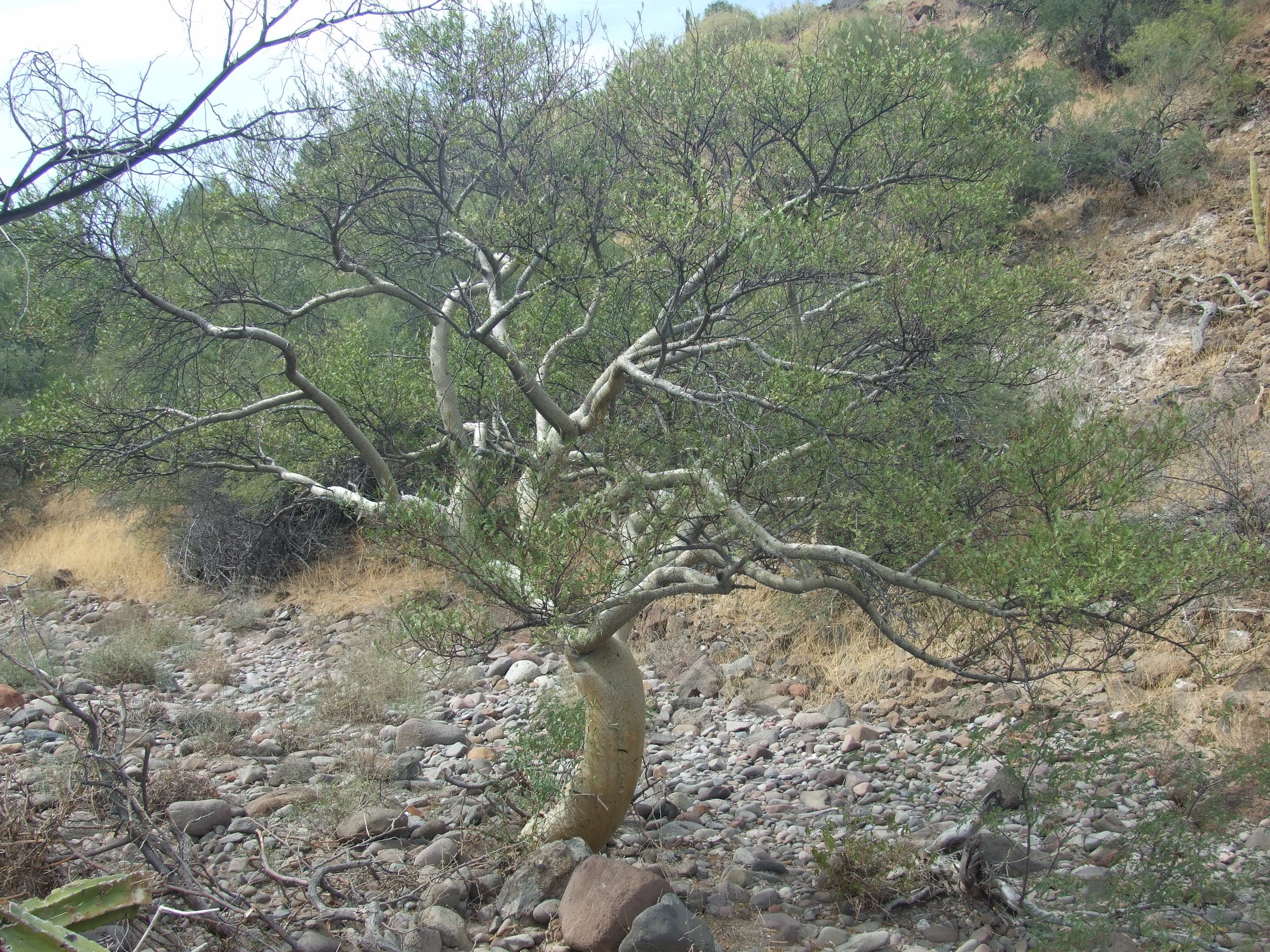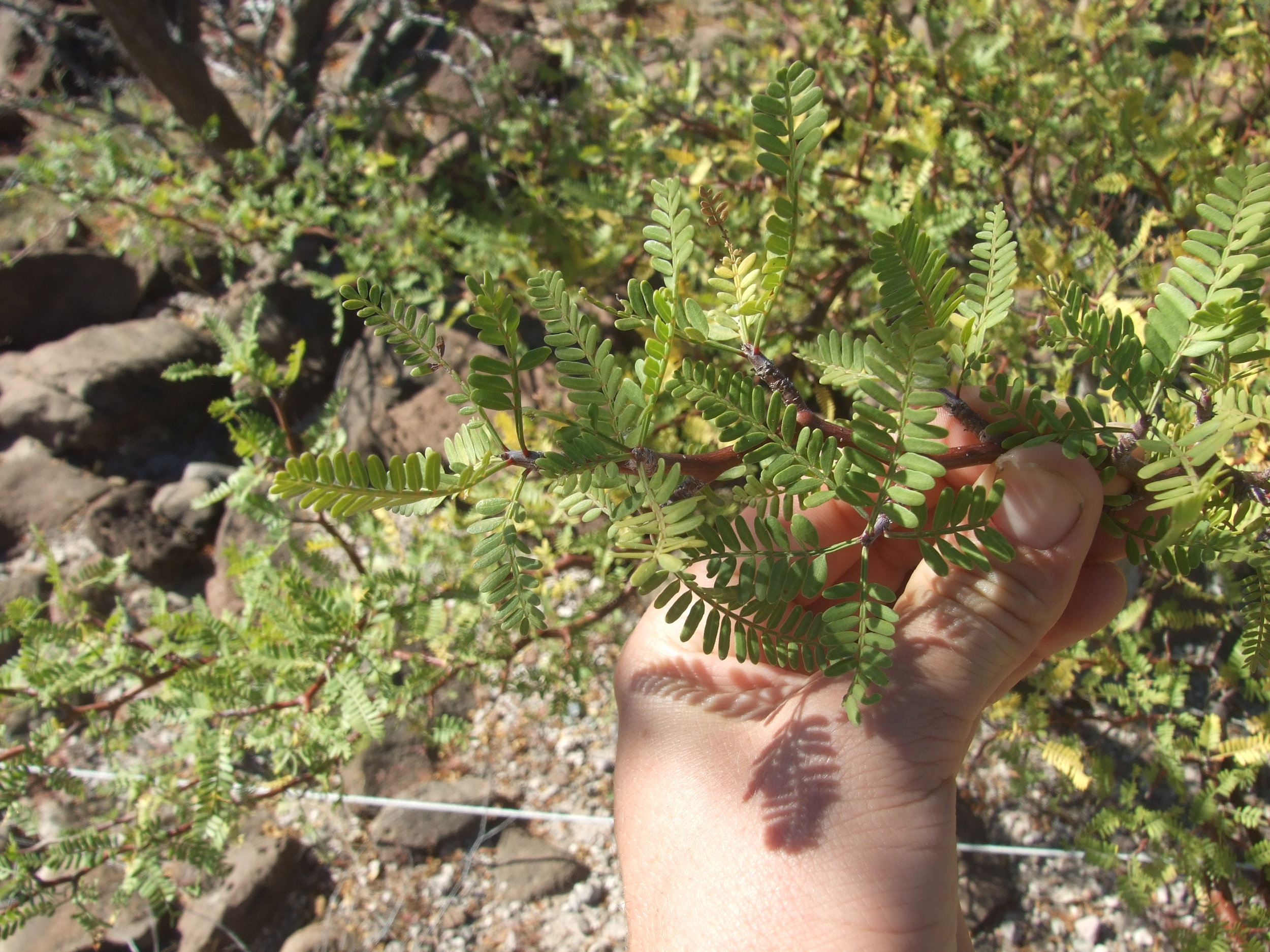The first seedpods are developing on a five year old Chiranthodendron pentadactylon tree I grew from seed.
Araucaria araucana - Monkey Puzzle tree
Araucaria anguvstifolia, another member of the pan-global Araucariaceae family, many of which have edible seeds and multiple other ethnobotanical uses.
Native to It is native to central and southern Chile and western Argentina. A. araucana is the national tree of Chile. Its conservation status was changed to Endangered by the IUCN in 2013 due to the dwindling population caused by logging, forest fires, and grazing.
The large seeds, or pinions, are edible can be consumed, prepared in a wide variety of ways. The tree, however, does not yield seeds until it is around 30 to 40 years old, which discourages investment in planting orchards (although yields at maturity can be immense); once established, it can live possibly as long as 1,000 years.
Araucaria bidwillii - Bunya-Bunya pine
Araucaria angustifolia - Para pine, Brazilian pine, Candelabra tree
Arecaceae, Jubaea chilensis
I came across this solitary Jubaea chilensis planted in a town near where I live. In the autumn it produces massive quantities of seed. The Jubaea chilensis palm has one of the most monumental trunks of any plant in this family. The thickest well - documented trunk was 66 inches in diameter. Of the more than 2,600 known species of palms. J. chilensis is the second most massive, exceeded only by the floodplain or river bottom variety of Borassus aethiopium. The round seeds resemble miniature coconuts, with an edible coco meat and liquid in the center.
I am currently trying to germinate 150 seeds collected 9 months ago.
A plant from Chile kills and eats sheep...
Puya chilensis, a temperate climate evergreen perennial and close relative to the comparatively tame pineapple, catches, kills and feeds off of relatively large mammals, including sheep.
P. chilensis doesn’t consume and digest plants by way of conventional carnivorous plant methods, but nonetheless, it will snag and trap a sheep in its masses of thorns, holding the animal until it dies of starvation, and then it will proceed to feed off nutrients supplied by the decomposing carcass.
The young leaf shoots of P. chilensis can be eaten by people. Baskets and such are made from strong fibers obtained from the leaves and stems of the plant.
Here is a short recent article on Puya chilensis, apparently a 10ft specimen has just bloomed for the first time at RHS Garden Wisely, in England. Cara Smith, a Horticulturist at Wisley had this to say about the rare occurrence: “I’m really pleased that we’ve finally coaxed our Puya chilensis into flower. We keep it well fed with liquid fertilizer as feeding it on its natural diet might prove a bit problematic. It’s growing in the arid section of our glasshouse with its deadly spines well out of reach of both children and sheep alike.”
So, needless to say, Puya chilensis is a great contender for privacy screening / security planting along boarders shared with pesky neighbors.
Here are some photo I have posted previously of a very close relative to Puya chilensis, Puya berteroniana, spectacular in its own regard for its massive aquamarine/blue and orange flower spikes.
Fouquieriaceae, Fouquieria diguetii, Palo Adan, Adam's Tree
This is a somewhat unique, tree-like shrub, with a short trunk and numerous branches growing upright. When in bloom this species has a spectacular reddish-pink bloom, very bright and in stark contrast to the desertscape. Reportedly the bark is stripped and cooked and used to wash cuts.
Palo Adan, leafing out
Palo Adan, leaf
Palo Adan
Palo Adan, bark detail
Crataegus mexicana - Mexican hawthorn
I encountered this Mexican hawthorn tree at the Gold Ridge Experimental Farm in Sebastopol, CA - Luther Burbank’s former laboratory. Although much of the acreage has long been converted to housing development and only a small tract of the former farm remains, there are some interesting trees surviving. One area I return to whenever I visit is the small group of Cratageus species in the back where a few species, including C. mexicana, are still thriving.
Compared to the Chinese Hawthorn, C. pinnatifida, the Mexican hawthorn tastes much better out of hand and has an interesting aroma, reminiscent of some obscure tropical fruit or synthetic bubblegum.
The fruit of Crategeus mexicana is eaten in Mexico cooked, raw, or canned. It resembles a crabapple, but it has three or sometimes more brown hard stones in the center. It is a main ingredient used in ponche, the traditional Mexican hot fruit punch that is served at Christmas time and on New Year's Eve. On Dia de los Muertos tejocote fruit as well as candy prepared from them are used as offerings to the dead, and rosaries made of the fruit are part of altar decorations. A mixture of tejocote paste, sugar, and chili powder produces a popular Mexican candy called rielitos, because it resembles a tiny train rail.
In some parts of Mexico, tejecote is taken for treating flu and cough, and also to prevent several cardiovascular diseases.
Due to its high pectin content, the fruit is industrially processed to extract pectin for the food, cosmetic, pharmaceutical, textile and metal industries.
Other uses include food for livestock (for which the leaves and fruits are used) and traditional medicinal uses; a Mexican hawthorn root infusion is used as a diuretic and as a remedy for diarrhea and fruit-based preparations are a remedy for coughing and several heart conditions.
The Mexican hawthorn tree's wood is hard and compact, it is good for making tool handles as well as for firewood.
Aristolochia grandiflora
Aristolochia grandiflora detail.
